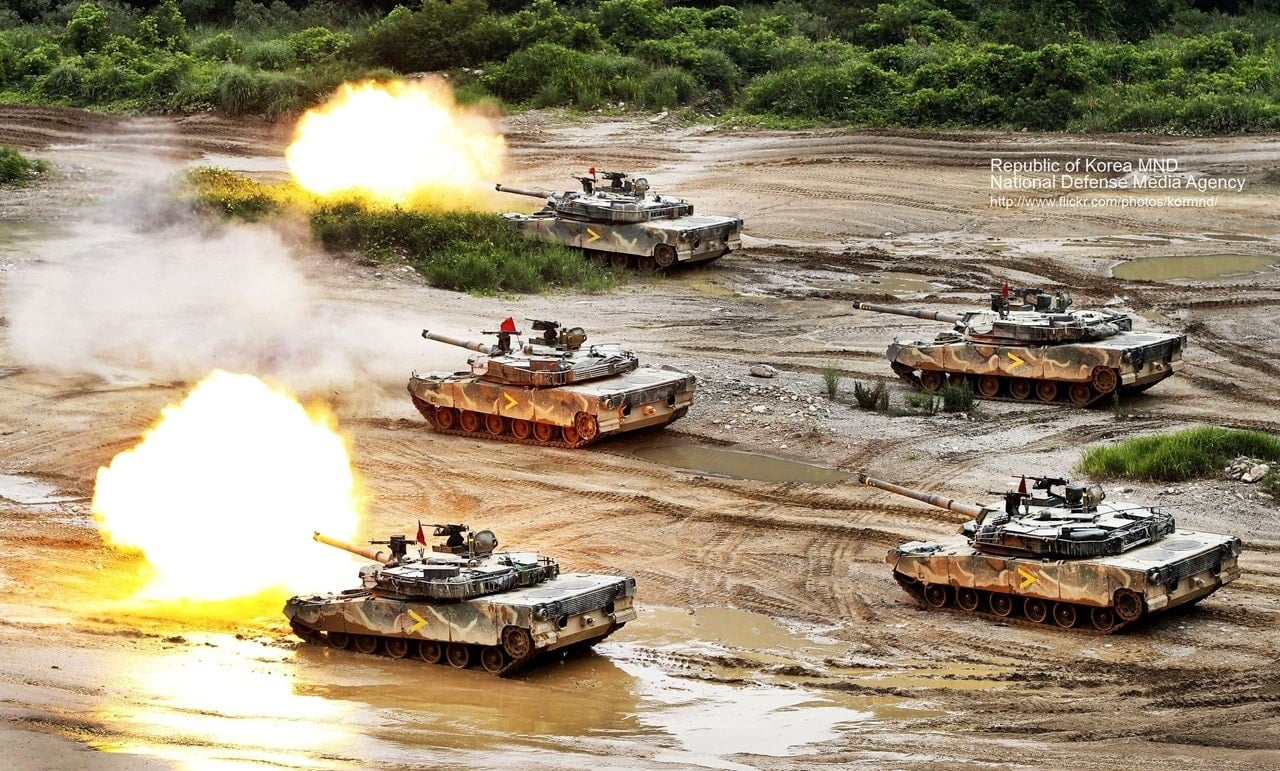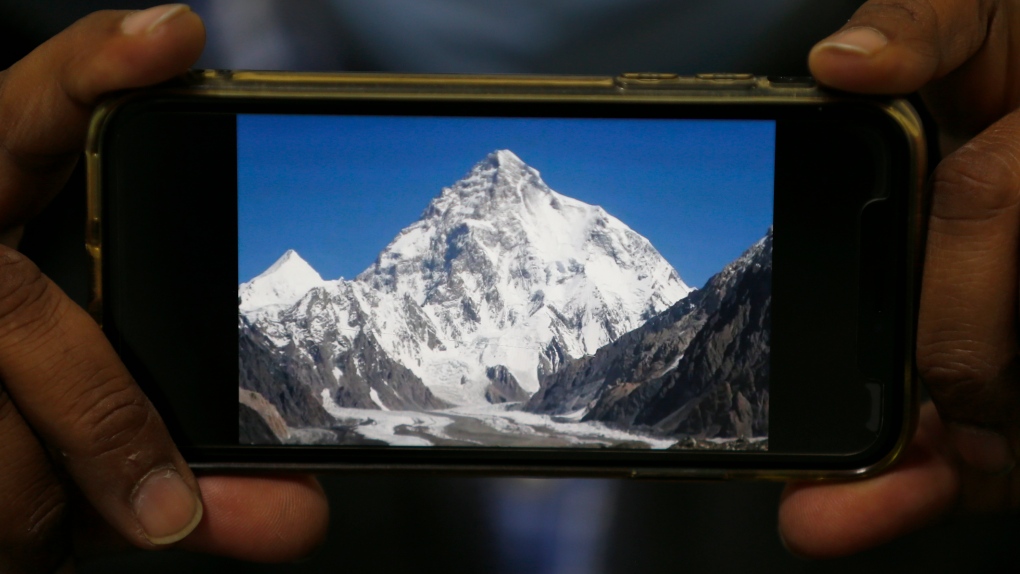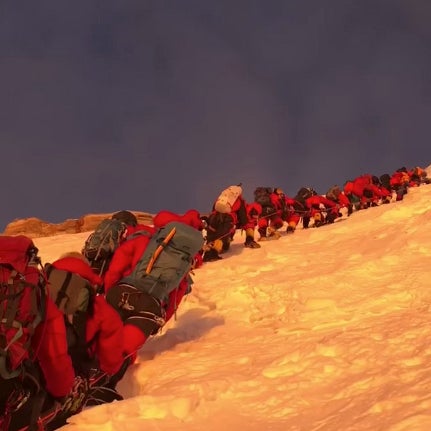ISLAMABAD — Bad weather on Monday forced Pakistani army helicopters to temporarily halt their search for three mountaineers who went missing while attempting to scale K2, the world’s second-highest mountain

The search was stopped just hours after it resumed for the third consecutive day, with officials uncertain when weather conditions would improve enough for it to resume again. Friends and family of the three — Pakistani climber Ali Sadpara, John Snorri of Iceland and Juan Pablo Mohr of Chile — grew increasingly concerned for their fate in the harsh environment.
The three lost contact with base camp late on Friday and were reported missing on Saturday, after their support team stopped receiving communications from them during their ascent of the 8,611-meter (28,250-foot) high K2 — sometimes referred to as “killer mountain.”
Located in the Karakorum mountain range, K2 is one of the most dangerous climbs. Last month, a team of 10 Nepalese climbers made history by scaling the K2 for the first time in winter.
Waqas Johar, a district government administrator, said on Twitter that almost 60% of K2 was under clouds. The search and rescue team was unable to find any clue of the climbers' whereabouts so far, he said, adding it will attempt again once the weather improves.
Earlier, Sadpara’s son said in a video statement released to the media that the chances of the mountaineers' survival in the harsh winter conditions were extremely low. Sadpara, an experienced climber, had earlier scaled the world’s eight highest mountains, including the highest, Mount Everest in the Himalayas, and was attempting to climb K2 in winter.
“Miracles do happen and the hope for a miracle is still there,” said Karar Haideri, secretary at the Pakistan alpine Club. He said a statement from the authorities was expected later on Monday.
Sadpara's son Sajid Ali Sadpara, himself a mountaineer who was part of the expedition at the start but later returned to base camp after his oxygen regulator malfunctioned, said their chances after “spending two to three days in the winter at 8,000 (meters' altitude) are next to none."
The younger Sadpara praised the rescue and search efforts but said “as a climber, I know that ... only a miracle can save their lives.”
The younger Sadpara's oxygen regulator had malfunctioned when he reached K2's most dangerous point, known as Bottle Neck, earlier last week. There, he waited for his father and two other climbers for more than 20 hours but with no sign of them, he descended.
Since the climbers went missing, Iceland's foreign minister, Gudlaugur Thór Thórdarson, has spoken to his Pakistani counterpart, Shah Mahmood Qureshi, by telephone. According to Pakistan's foreign ministry, Qureshi assured him that Pakistan would spare no effort in the search for the missing mountaineers.
Although Mount Everest is 237 metres (777 feet) taller than K2, the K2 mountain is much farther north, on the border with China, and subject to worse weather conditions, according to mountaineering experts. A winter climb is particularly dangerous because of the unpredictable and rapid change in the weather.
Winter winds on K2 can blow at more than 200 kph (125 mph) and temperatures can drop to minus 60 degrees Celsius (minus 76 Fahrenheit). In one of the deadliest mountaineering accidents ever, 11 climbers died in a single day trying to scale K2 in 2008.
___
Associated Press writer Asim Tanveer in Multan, Pakistan, contributed to this story.
Munir Ahmed, The Associated Press
Search for 3 climbers on K2 in Pakistan to continue Monday
ISLAMABAD — The search for three missing climbers will resume early Monday on K2, the world’s second highest mountain, Pakistani officials said Sunday.

Onboard the army helicopter was Sajjid Sadpara, the son of the missing Pakistani climber, Ali Sadpara, and the Nepali leader of the winter expedition. Also missing are John Snorri of Iceland and Juan Pablo Mohr of Chile.
The three lost contact with base camp late Friday and were reported missing Saturday after their support team stopped receiving communications from them during their ascent of the 8,611-meter (28,250-foot) high K2 mountain, sometimes referred to as “killer mountain.”
The military said a ground search has also been initiated from the K2 base camp.
Karrar Haideri, a top official with the Alpine Club of Pakistan, said army helicopters will resume the search that began a day earlier.
A military statement elaborating the day search and rescue operation said despite "extremely challenging conditions," the army helicopters searched Abruzzi Spur and other routes but no trace of the missing climbers so far.
It said the success of the search efforts depend on the weather. Choppers flew up to the limit of 7,800 metres over the K2.
K2, located in the Karakorum mountain range, is one of the most dangerous climbs. Last month, team of 10 Nepalese climbers made history by scaling the K2 for the first time in winter.
“The base camp received no signals from Sadpara and his foreign companions after 8,000 metres ... A search is on and let's pray for their safe return home,” Haideri told The Associated Press.
Pakistan’s foreign ministry issued a statement saying Iceland's foreign minister, Gudlaugur Thór Thórdarson, spoke to his Pakistani counterpart, Shah Mahmood Qureshi, by telephone. Qureshi assured him that Pakistan would spare no effort in the search for the missing mountaineers.
Sadpara and his team left the base camp on Feb. 3, a month after their first attempt to scale the mountain failed because of weather conditions.
Although Mount Everest is 237 metres (777 feet) taller than K2, the K2 mountain is much farther north on the border with China and subject to worse weather conditions, according to mountaineering experts. They say a winter climb is particularly dangerous because of the unpredictable and rapid change in weather conditions.
Winter winds on K2 can blow at more than 200 kph (125 mph) and temperatures can drop to minus 60 degrees Celsius (minus 76 Fahrenheit). In one of the deadliest mountaineering accidents ever, 11 climbers died in a single day trying to scale K2 in 2008.
Haideri said Sadpara’s son, Sajid, had returned to the base camp safely after his oxygen regulator malfunctioned at 8,000 metres.
Chhang Dawa Sherpa, who heads the Seven Summit Treks expedition company and also was the leader of winter expedition, tweeted that two army helicopters along with Saijd Sadpara, Elia and himself found no trace during their two days of aerial searches.
Sherpa said on Saturday around noon, Ali’s son Sajid reported that they were together and in good shape to head toward the summit. But due to a problem with his oxygen regulator Sajid had to return from their location, known as Bottle Neck. Sajid waited for them for more than 20 hours with the belief that they were heading to the summit and would return. With no sign of them, Sajid descended.
Sajid Sadpara said on Twitter “It was around 11 AM they were going up and I am sure they have done the summit and on descend they might have faced (a) problem.”
Haideri, the Alpine club official, was hopeful that Sadpara's company will help his other companions survive rough conditions.
He noted Sadpara's experience as a mountaineer who has climbed the world's eight highest mountains, including the highest, Mount Everest in the Himalayas, and was attempting to climb K2 in winter.
___
Asim Tanveer contributed to this story from Multan, Pakistan.
Zarar Khan, The Associated Press







